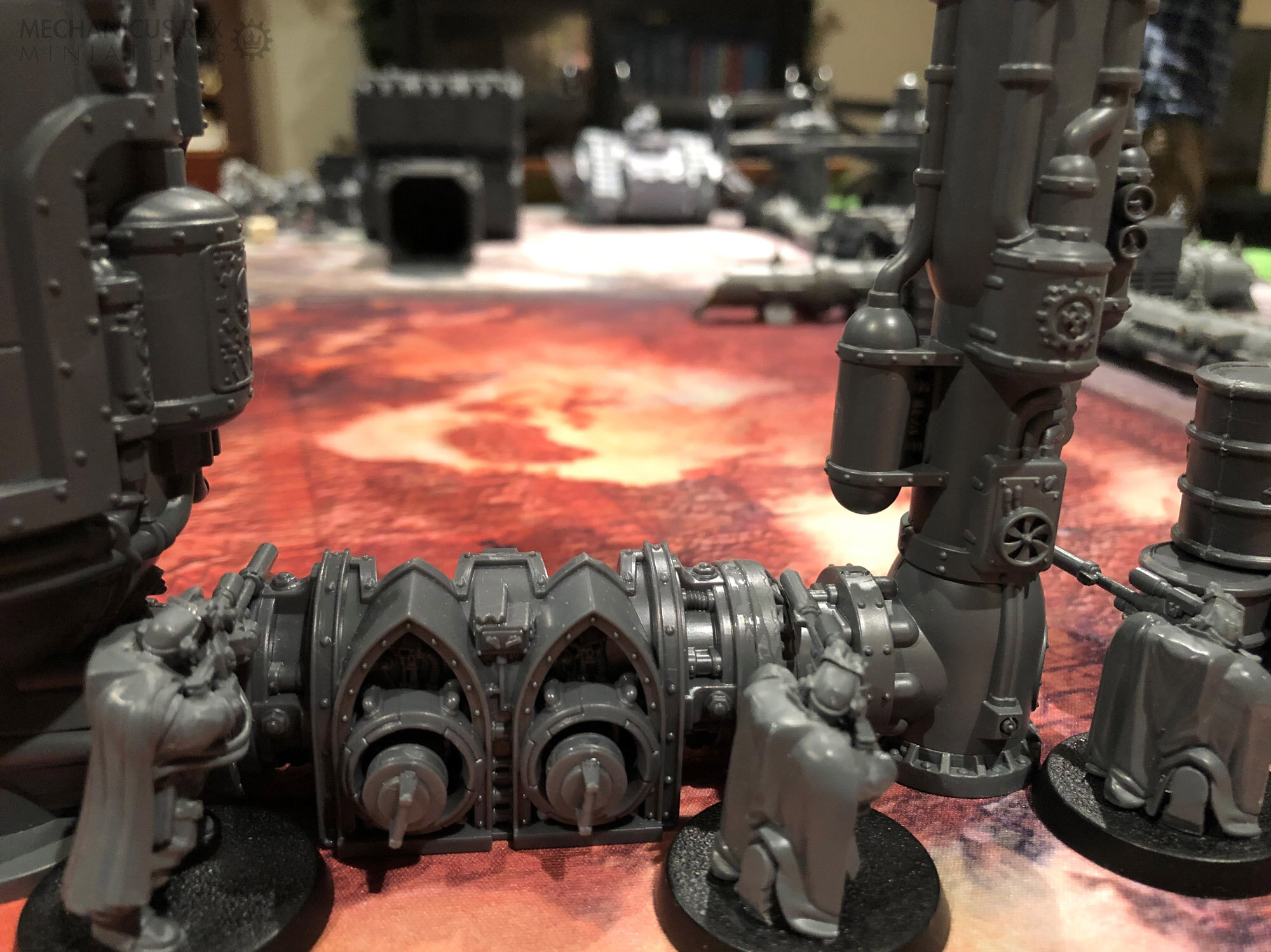Welcome back.
We are not leaving the 30K universe just yet, but are switching focus away from the Death Guard.
Most of the (few) Heresy games I get to play are with 2 other players. While we occasionally adjust points values to even up the sides (e.g. one 2000pt army vs two 1000pt armies) more often than not we play a free for all, everyone against everyone. This has proven to be a less than streamlined experience as the rules are really written for one on one play.
When we came across the Triumph and Treachery rules, specifically written for multi-player games, it piqued our interest. The rules are definitely more ‘beer and pretzels’ than tournament style and mostly introduce random elements and more opportunities to surprise you and your opponents.
The rules are fairly straightforward:
The only real multi-player rule is that, in any given phase, you can only interact with one opponent
This takes a little getting use to but forces you to assess the biggest threat each phase (and eliminates a lot of the rules issues around multiple people trying to interact at the same time, and frankly, just streamlines the game play)
Next, it introduces a random turn order
On the edges, this means you may get 2 turns back to back or have everyone else go twice before you
But it does create some fun tension as you tentatively turn the card to see who goes next - will it be you and you can pull off your brilliant strategy or will it be your opponent who might disrupt everything
Victory tokens are introduced as a replacement for victory conditions.
For every unit destroyed, the victor receives tokens to represent the point value of said unit
Each player also has a hand of cards that either grant them a benefit or causing an impediment to their opponents
Some cards can be played at anytime, in any phase, on any players turn, others have more proscribed uses. While most cards can be played for free, some require spending precious victory tokens
Again, they just add a level of interest and fun. Usually they have a minimal impact on the outcome and add a bit of color/fluff to the proceedings. But every once and a while they can play a pivotal role - like when I was preparing to wipe out a unit of deep striking Terminators that appeared in my back ranks then my opponent played a card that prevented me from targeting him.
Finally, the mercenary rules allow you to field units from another army (up to 20% of your force). But those units can turn on you if they are routed or may sit a round out if enough cash (aka victory tokens) change hands
Obviously, you could just take an allied contingent, but the mercenary rules are more flexible, allowing you to take any model from any army so long as there is one character model
You can also convert points into victory tokens if you want to play at a point disadvantage.
Now, as you'll note from the pictures, there was one complication - this supplement was designed for the old WHFB.
Fortunately, most of the rules were easily transferable (e.g. a +1 WS works in both systems just fine) and where the rules don't apply (e.g. magic) there was a 30K comparable (e.g. pyskics). So most of the changes were cosmetic.
I updated all the turn order cards to reflect Horus Heresy forces.
I updated all treachery card imgary to match the red book visual style and updated the flavor text.
Lastly I replaced the money tokens, something Space Marines would care little for, with something they would - glory and honor! Thought this worked well as it would be something Maries would strive to earn, commanders might actually use to motivate or sway troups and would work for both loyalist and traitor forces.
In addition, we also added a few House rules
Though the intent is to use the tokens in place of the scenario victory conditions, we often use both victory tokens and victory points (at a conversion of 200 tokens for 1 victory point)
For the Mercenary’s rule, we allow players to take units from their own army and allowed reserve deployment (where is doesn’t conflict with any unit/legion rules). The idea actually plays very well in Horus Heresy, where every legion:
had Marines that secretly sided with enemy, lurking in their ranks
included loyal (or traitor) Marines from other, oppositely declared, legions
had Marines who were conflict over who the enemy was
had Marines mortified to find themselves fighting against their former brothers
Next up we’ll look at some of the component designs and producing the final pieces.











